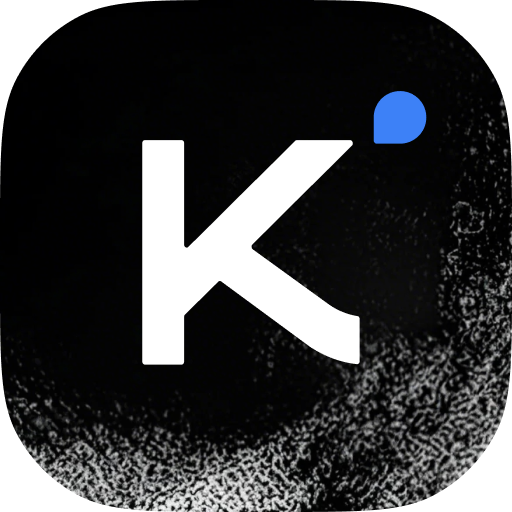What are Open Source LLMs for Reasoning?
Open source LLMs for reasoning are specialized Large Language Models designed to excel at logical thinking, problem-solving, and multi-step inference tasks. These models use advanced architectures like reinforcement learning and mixture-of-experts to perform complex mathematical calculations, code analysis, and structured reasoning. They enable developers and researchers to build applications requiring sophisticated logical capabilities, from automated theorem proving to advanced software engineering solutions, while providing transparency and accessibility that closed-source alternatives cannot match.
DeepSeek-R1
DeepSeek-R1-0528 is a reasoning model powered by reinforcement learning (RL) that addresses the issues of repetition and readability. Prior to RL, DeepSeek-R1 incorporated cold-start data to further optimize its reasoning performance. It achieves performance comparable to OpenAI-o1 across math, code, and reasoning tasks, and through carefully designed training methods, it has enhanced overall effectiveness.
DeepSeek-R1: State-of-the-Art Reasoning Performance
DeepSeek-R1-0528 is a reasoning model powered by reinforcement learning (RL) that addresses the issues of repetition and readability. Prior to RL, DeepSeek-R1 incorporated cold-start data to further optimize its reasoning performance. It achieves performance comparable to OpenAI-o1 across math, code, and reasoning tasks, and through carefully designed training methods, it has enhanced overall effectiveness. With 671B parameters using MoE architecture and 164K context length, it represents the pinnacle of open-source reasoning capabilities.
Pros
- Performance comparable to OpenAI-o1 on reasoning benchmarks.
- Advanced reinforcement learning optimization.
- 671B parameters with efficient MoE architecture.
Cons
- Higher computational requirements due to model size.
- Premium pricing at $2.18/M tokens output on SiliconFlow.
Why We Love It
- It delivers OpenAI-o1 level performance in an open-source package, making world-class reasoning accessible to researchers and developers worldwide.
MiniMax-M1-80k
MiniMax-M1 is a open-weight, large-scale hybrid-attention reasoning model with 456 B parameters and 45.9 B activated per token. It natively supports 1 M-token context, lightning attention enabling 75% FLOPs savings vs DeepSeek R1 at 100 K tokens, and leverages a MoE architecture. Efficient RL training with CISPO and hybrid design yields state-of-the-art performance on long-input reasoning and real-world software engineering tasks.

MiniMax-M1-80k: Efficient Large-Scale Reasoning
MiniMax-M1 is a open-weight, large-scale hybrid-attention reasoning model with 456 B parameters and 45.9 B activated per token. It natively supports 1 M-token context, lightning attention enabling 75% FLOPs savings vs DeepSeek R1 at 100 K tokens, and leverages a MoE architecture. Efficient RL training with CISPO and hybrid design yields state-of-the-art performance on long-input reasoning and real-world software engineering tasks, making it ideal for complex, extended reasoning scenarios.
Pros
- 456B parameters with efficient 45.9B activation per token.
- Native 1M-token context support for extensive reasoning.
- 75% FLOPs savings compared to DeepSeek R1.
Cons
- Complex hybrid architecture may require specialized knowledge.
- Highest pricing tier at $2.2/M tokens output on SiliconFlow.
Why We Love It
- It combines massive scale with incredible efficiency, delivering exceptional reasoning performance while using significantly fewer computational resources than competitors.
Kimi-Dev-72B
Kimi-Dev-72B is a new open-source coding large language model achieving 60.4% on SWE-bench Verified, setting a state-of-the-art result among open-source models. Optimized through large-scale reinforcement learning, it autonomously patches real codebases in Docker and earns rewards only when full test suites pass. This ensures the model delivers correct, robust, and practical solutions aligned with real-world software engineering standards.

Kimi-Dev-72B: Coding and Engineering Reasoning Expert
Kimi-Dev-72B is a new open-source coding large language model achieving 60.4% on SWE-bench Verified, setting a state-of-the-art result among open-source models. Optimized through large-scale reinforcement learning, it autonomously patches real codebases in Docker and earns rewards only when full test suites pass. This ensures the model delivers correct, robust, and practical solutions aligned with real-world software engineering standards. With 72B parameters and 131K context length, it offers excellent reasoning capabilities at competitive SiliconFlow pricing.
Pros
- State-of-the-art 60.4% score on SWE-bench Verified.
- Specialized in real-world software engineering reasoning.
- Most cost-effective at $1.15/M tokens output on SiliconFlow.
Cons
- Smaller parameter count compared to other top models.
- Primarily optimized for coding rather than general reasoning.
Why We Love It
- It excels at practical software engineering reasoning while offering the best value proposition, making advanced coding intelligence accessible to all developers.
Reasoning Model Comparison
In this table, we compare 2025's leading open-source reasoning models, each with unique strengths. For general reasoning tasks, DeepSeek-R1 offers OpenAI-o1 comparable performance. For efficiency and long-context reasoning, MiniMax-M1-80k provides exceptional computational savings. For software engineering and coding reasoning, Kimi-Dev-72B delivers state-of-the-art results at the best value. This comparison helps you choose the right model for your specific reasoning requirements and budget on SiliconFlow.
| Number | Model | Developer | Subtype | SiliconFlow Pricing | Core Strength |
|---|---|---|---|---|---|
| 1 | DeepSeek-R1 | deepseek-ai | Reasoning | $2.18/M tokens output | OpenAI-o1 comparable performance |
| 2 | MiniMax-M1-80k | MiniMaxAI | Reasoning | $2.2/M tokens output | 75% FLOPs savings, 1M context |
| 3 | Kimi-Dev-72B | moonshotai | Reasoning | $1.15/M tokens output | Best coding reasoning value |
Frequently Asked Questions
Our top three picks for 2025 are DeepSeek-R1, MiniMax-M1-80k, and Kimi-Dev-72B. Each of these models stood out for their exceptional reasoning capabilities, innovative architectures, and unique approaches to solving complex logical and mathematical problems.
Our analysis shows specialized strengths: DeepSeek-R1 excels at general mathematical and logical reasoning comparable to closed-source models. MiniMax-M1-80k is ideal for long-context reasoning tasks requiring extensive information processing. Kimi-Dev-72B is unmatched for coding and software engineering reasoning with its 60.4% SWE-bench Verified score.
